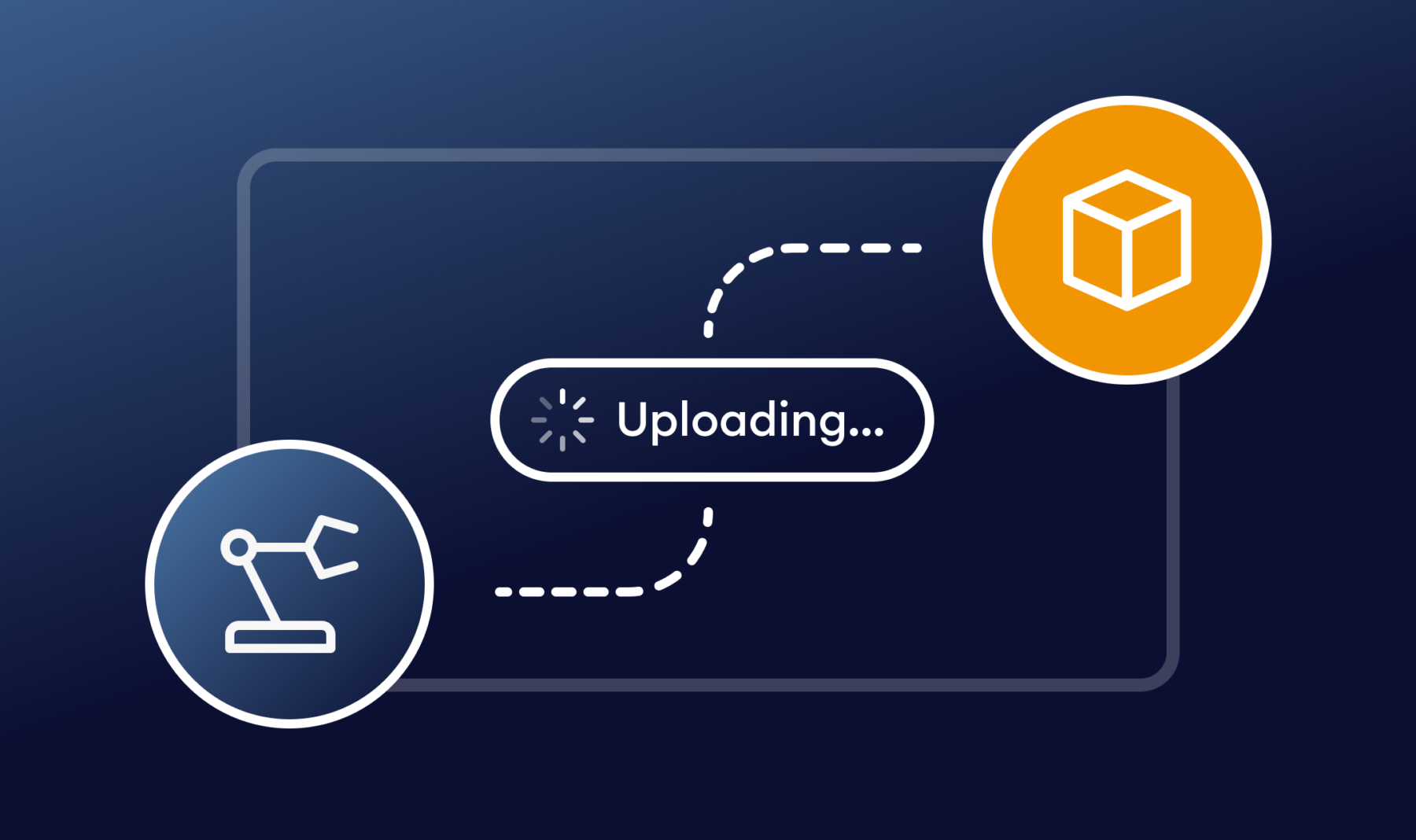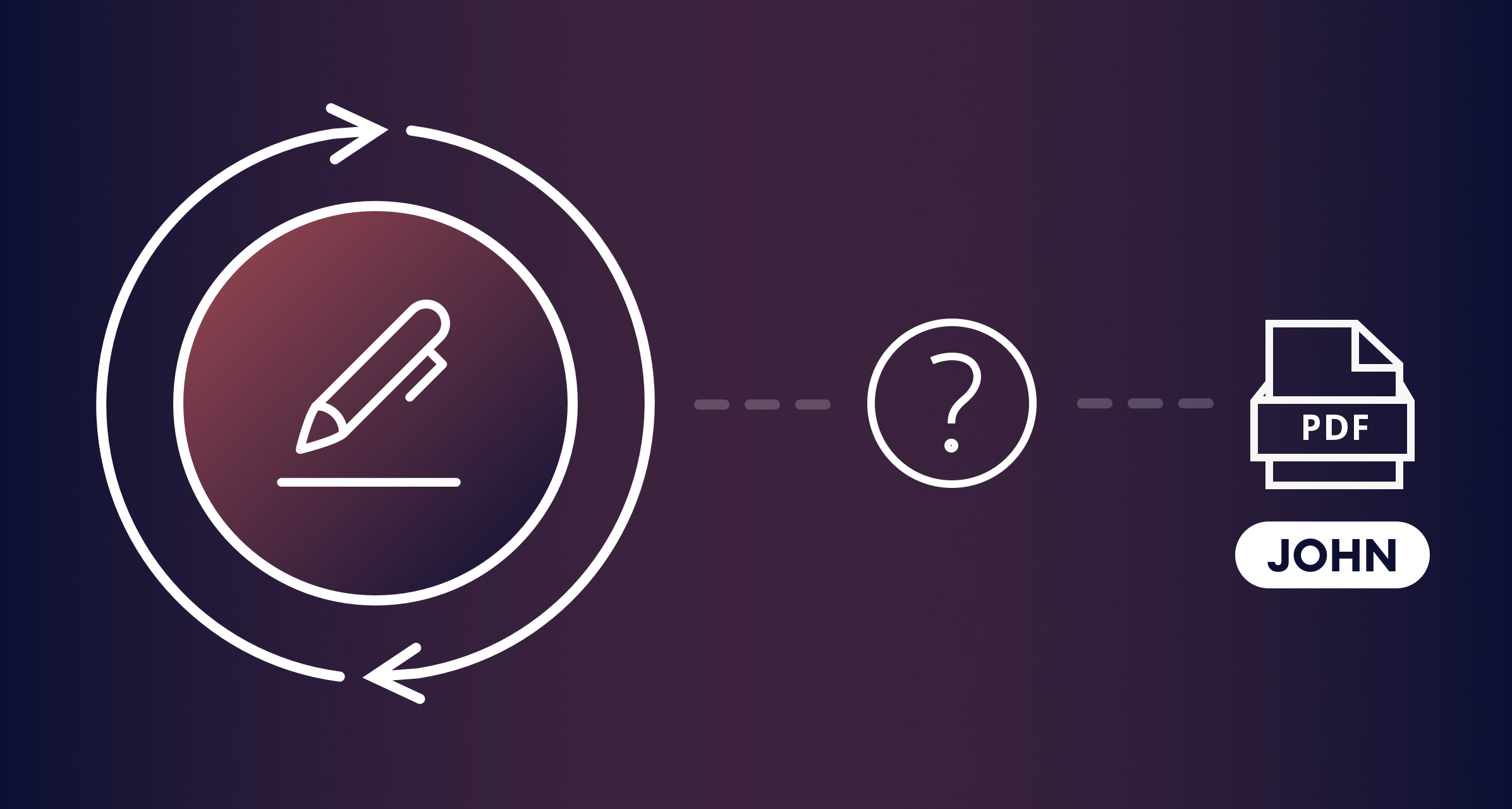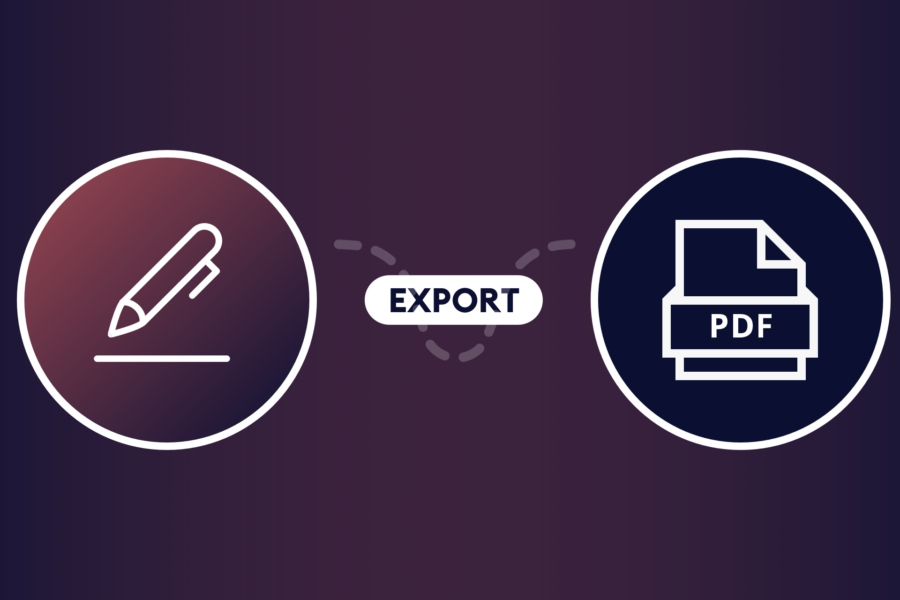There are a few ways to retrieve form entry data from Gravity Forms. The usual way is to log into your WordPress site and run down the list of submissions. If you have a large volume of entries, that can be tedious — not to mention risking a carpal tunnel flare-up from all the clicking. An alternative method is to have the data emailed to you; but with the amount of emails you deal with on a daily basis, it may not be a major improvement.
There’s a third, better option. You can export entry form data and send it straight to your Amazon S3 bucket using Entry Automation. Rather than handle each submission individually, you can combine multiple entries into one easy-to-read file — in CSV. Excel, JSON, or PDF. It’s easier to collaborate if your colleagues have access to your Amazon S3 bucket. You can also have the file automatically deleted after exporting so you can keep your web server clean.
It’s surprisingly easy to upload entry data from Gravity Forms to Amazon S3, and in this post, I’ll show you how.
Getting Started with Entry Automation
If you have forms ready on your WordPress site created with Gravity Forms, then you just need our Entry Automation product and the Amazon S3 extension. Entry Automation helps you save time by automating the process of data export (and more). You can export your data in CSV, Excel, JSON, and PDF formats, automatically uploading the files to your Amazon S3 bucket.
You can install and configure the Amazon S3 Extension once you activate Entry Automation.
Install the Amazon S3 Extension
Navigate to Gravity Forms → Settings and navigate to the Entry Automation tab. You’ll see a list of available extensions as long as your license key has been entered and validated. You may need to upgrade your license to install the extension, in which case you’ll see an “Upgrade License” button.
When your license is upgraded, you’ll have an “Install Extension” button. Click that to download it, then activate the Amazon S3 extension.
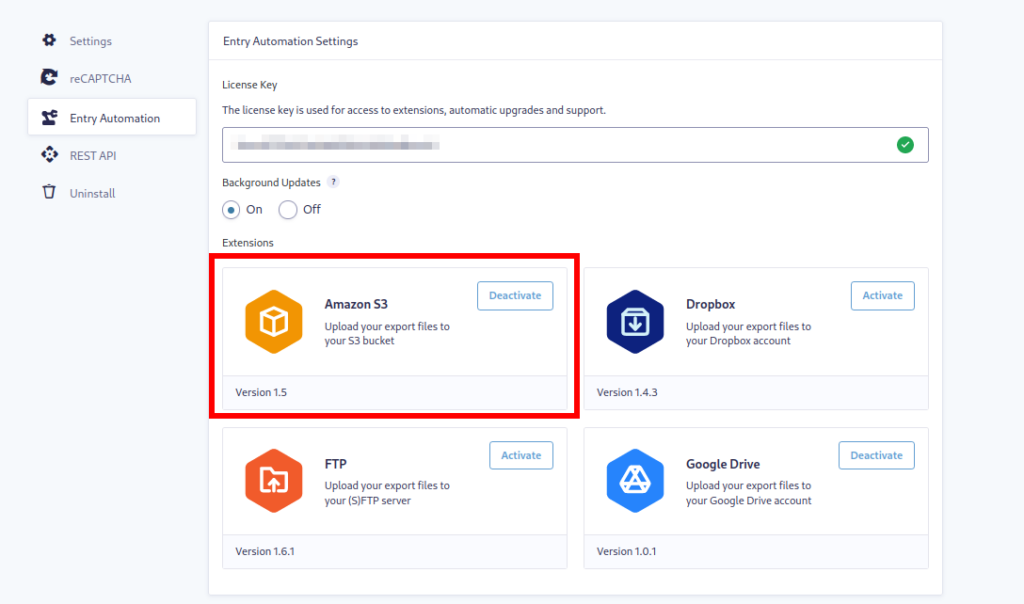
Authenticating with Amazon S3
With the extension activated, you’re ready to connect with your Amazon S3 account. Scroll down in the same menu until you see the Amazon S3 Settings section (you may need to refresh the page).
Enter your Amazon S3 login credentials in the provided fields. You’ll need your AWS Access Key ID and your AWS Secret Access Key. If you have trouble finding them, Amazon has a guide for you.
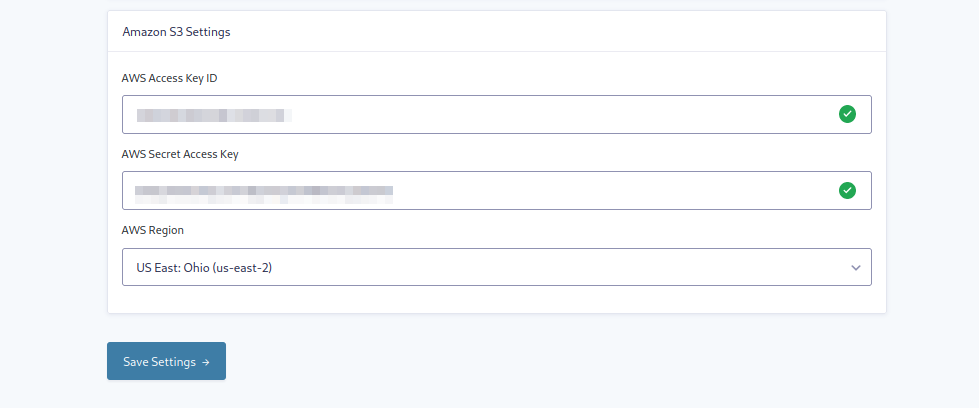
If you’re successfully connected, green check marks will appear in the access key fields. Now you’re ready to upload entries directly to your Amazon S3 account.
How to Send Form Entries to Amazon S3
In your Gravity Forms list, hover over the form you want to work with and select Settings → Entry Automation. Click Add New in the Entry Automation Tasks menu to create a new task. Start by giving your task an easy-to-recognize name like “Export to Amazon S3.”
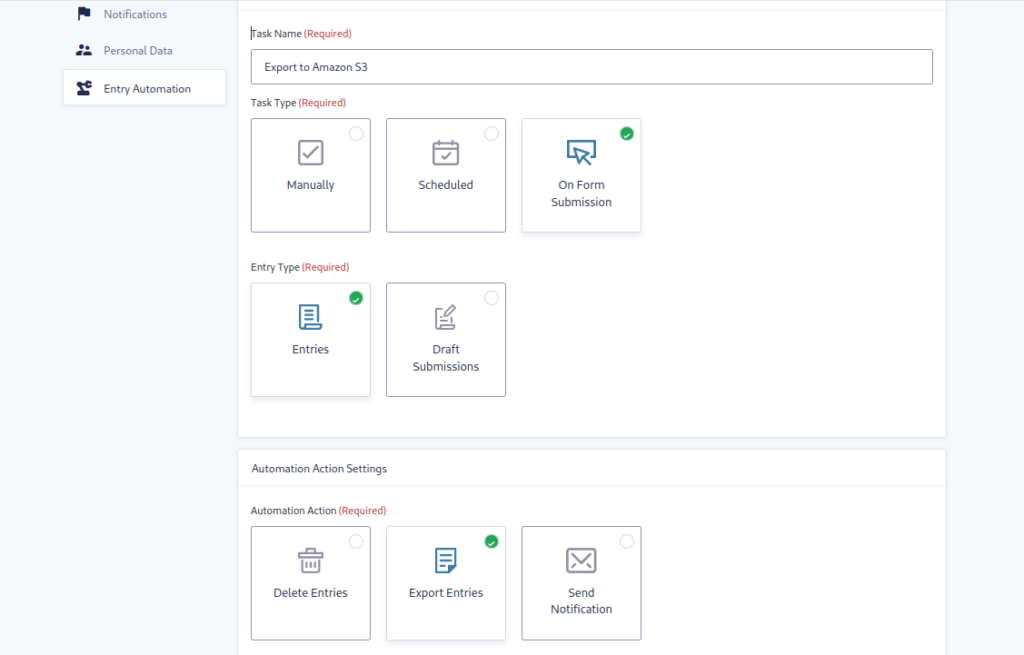
Choose your Task Type based on how you want it to run; Manually, Scheduled, or on Form Submission. For Entry Type you can choose (Active) Entries or even Draft Submissions if you want to track those. Under Automation Action Settings choose Export Entries. If you want to enable any Conditional Logic, configure that and then click Save Settings.
Next, you’ll choose the file format you want your data exported in. You can only choose one at a time, but you can create additional tasks later if you want to export more file formats with the same data. You also have the option to specify the file name structure. Use merge tags provided by clicking the {..} icon. You can also determine how to handle exports when the file name already exists.
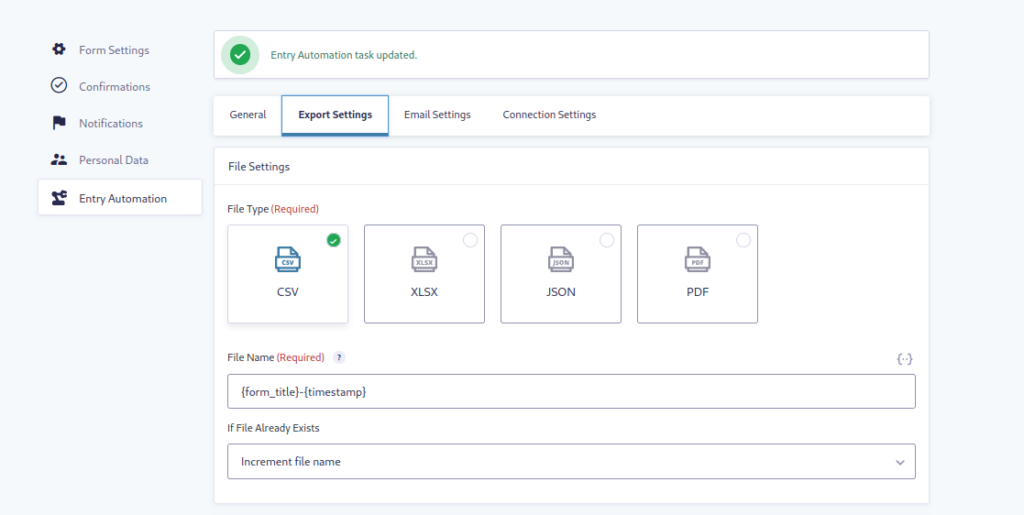
In the following section, you’ll choose how entries should be ordered and sorted in the exported file. Under the Field Selection Settings list, select all entry data you want to include in your exported file.
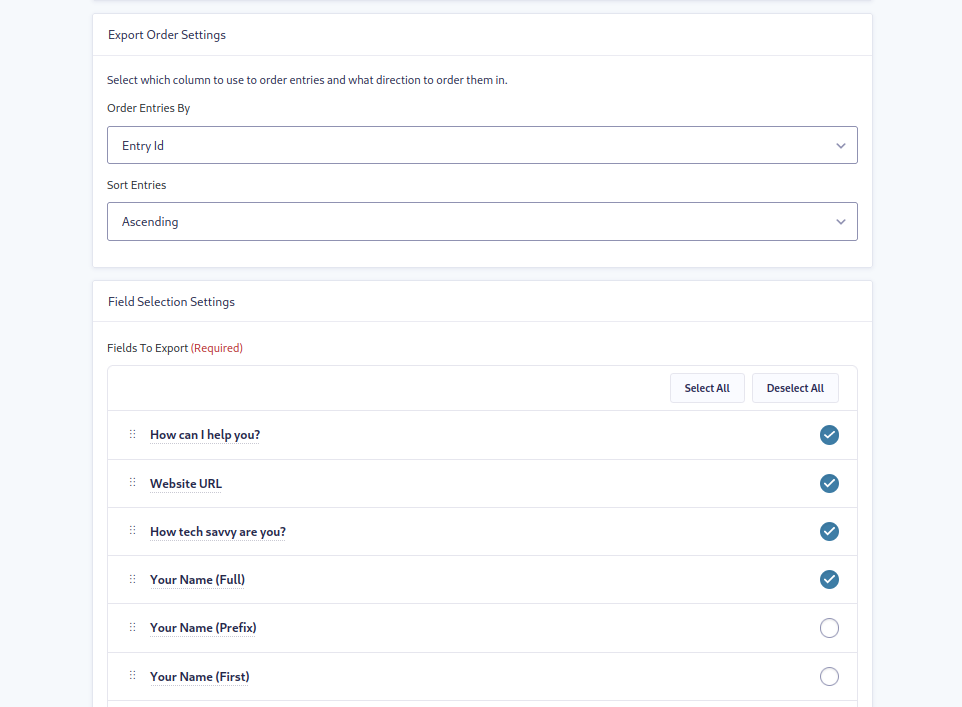
Lastly, you can toggle the option to delete the exported file from your site once it’s been sent to Amazon S3.
Click Save Settings, then head to the Connection Settings tab*.
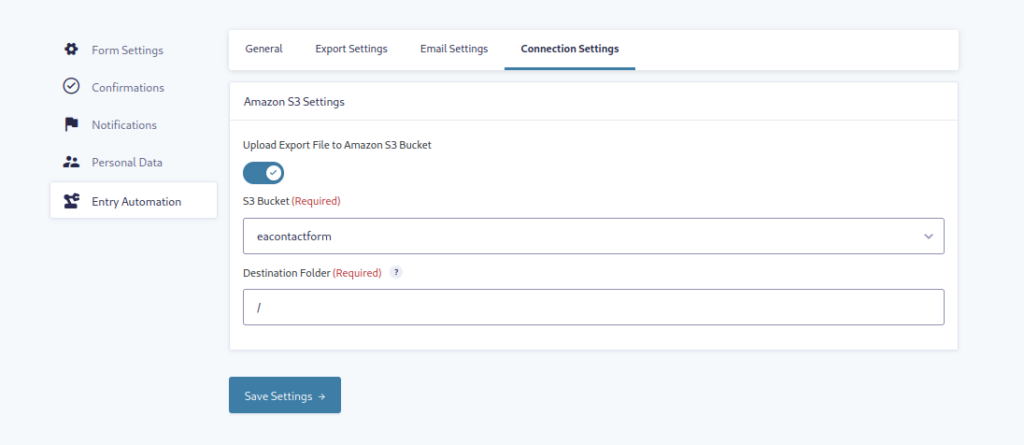
You’ve already connected to your Amazon S3 account in Entry Automation Settings, so just click the Upload Export File to Amazon S3 Bucket toggle. Type in a specific destination folder (or leave it with the / for the root). Save your settings, and you’re ready for your data to be uploaded automatically!
*Note that you can additionally have the exported file emailed in addition to being uploaded to Amazon S3. See the Email Settings tab to configure it.
Viewing Your Exported File(s)
Once some entries have been submitted on your form, you’ll see files populate your Amazon S3 bucket.

When you open the file, any entry data you selected from the list will be displayed. For example, a XLSX file will display entry data in an Excel spreadsheet format.
At any time, you can go back into your Export to Amazon S3 task and tweak the settings to dial in your ideal entry data export — or add new tasks to upload in different file formats.
Uploading Gravity Forms to Amazon S3 Made Easy
By uploading Gravity Forms entries to your Amazon S3 account, you’re making it a lot easier for yourself to manage form submissions. With the power of Entry Automation, you can also schedule tasks, delete entries, and send custom notifications to anyone who needs to review the form data.
Check out all the features of Entry Automation and see how it can save you time and energy.
